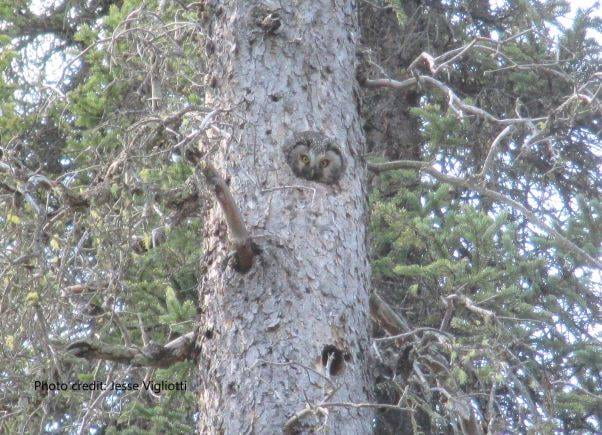My main area of interest is the ecology of cavity-using animal communities.

Boreal owl in cavity (credit Jesse Vigliotti).
The use of shelters such as tree cavities, burrows and shells for breeding, roosting, and protective cover is common in many animal taxa. One or a few species create these resources, which are then occupied by secondary users that are unable to create their own shelters. Woodpeckers, which excavate holes in trees, are often considered keystone species in cavity-using communities because they influence the diversity and abundance of secondary cavity-users (Martin et al. 2004). As well, in northern forests and in harvested forests, the availability of excavated and naturally occurring non-excavated holes limits populations of some cavity-users.
Because of interdependencies between cavity providers (woodpeckers) and secondary cavity users, cavity-using communities are structured in hierarchical “nest webs”, similar to food webs, based on nesting, foraging, and other interactions. While cavity-users have been studied extensively in other parts of the world, there is little information on community structure, cavity and habitat preference, reproduction, and overwinter cavity use among cavity-using species in northern boreal forests. Additionally, the effects of climate change and of natural and anthropogenic disturbances on cavity-using birds and mammals are largely unknown for species in Yukon forests.
Creation of baseline information on cavity-using communities of birds and mammals in southern Yukon is a focus of my research.

Black-capped Chickadee nestlings in box (credit Katie Aitken).

Katie Aitken checking a nest box (credit Jared Gonet).